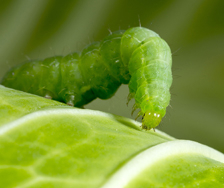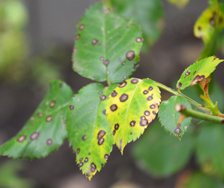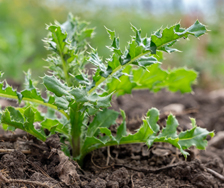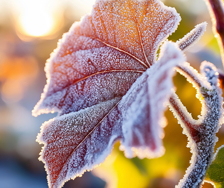Yates Account
Join now
Create a Yates account today!
Sign up to join the Yates Garden Club for monthly e-mails packed with seasonal inspiration, tips for success & exclusive promotions.
Plus if you’re a Garden Club member you can take part in the Yates Growing Community - a blog to share successes, get advice & win prizes in fun challenges along the way!

Forgot password
Enter the email address associated with your account, and we'll email you a new password.

What to do, this Month
February is often the best month of summer. The hotter, more settled weather perfectly coincides with the kids going back to school. At this stage of summer, the garden can seem tired after months of blooming, producing and coping with the dry conditions. To ensure plants continue to flourish right to the end of the season, make a conscious effort to get into the garden to nurse it through to autumn. Increase your vigilance for any problems and tackle them straight away.
- In blazing heat, gardens will be extra thirsty. The best times to water to avoid evaporation loss are: first thing in the morning, or early in the evening. The next best time is...when you have the time! If you can see the garden needs it, get the hose out right away. Always be mindful of local water restrictions though.
- Look out for pests - populations will be exploding exponentially. It's always quicker and easier fix problems while they're small. If they become large problems, they can kill your plants.
- Hot, humid weather is perfect for fungal diseases like blight and powdery mildew to thrive. Reduce the risk by trimming away thick foliage to improve airflow. Water the soil at the base of plants, taking care not to splash the leaves. Hit diseases immediately with a fungicide and clean your tools after tending to infected plants.
- Give plants a 'pick-me-up' with a weekly liquid feed, to keep them growing well to the end of the season.
- Declare your enduring love with a rose plant; a gorgeous Valentine's gift that stays fresh for decades.
- If you can't avoid avoid gardening in the heat of the day, don't forget to put on sunscreen and a hat. Stay hydrated if you're out in the sun.

Vegie Garden Tasks
- It may be hot now...but it's time to get your winter garden started! You have so many options for homegrown winter vegetables; have a look here for inspiration.
- Sow seeds for beetroot, broccoli, Brussels sprouts, cabbage, cauliflower, celery, leeks, radish, silverbeet, swedes, spinach and parsnip.
- Extend the harvest with succession plantings of beetroot, carrots, salad crops, spring onion, and kohlrabi.
- Keep harvesting beans, tomatoes, eggplants, cucumbers, peppers and zucchini. These plants are desperately trying to set seed; if you let them, they'll decide their work is done and stop producing. The more you keep picking, the more each plant will yield.
- Give plants an energy boost with a weekly liquid feed, to help them resist pests and disease, plus keep on delivering a generous harvest.
- February is a high risk month for mildew on cucumbers, melons, zucchini and pumpkins. Remove the worst affected leaves and spray with Yates Nature's Way Fungus Spray.
- Pick sweetcorn when the tassels go dry and crispy, when the ears stick out about 45° and the when the juice from a kernel looks milky.
- It's quite a disappointment when watermelon is picked too early and tastes watery and bland. For maximum sweetness; the closest tendril to the watermelon stem should be brown, the surface should look dull, with a yellow patch on the bottom, and it should make a dull 'thud' sound when tapped.
- Encourage melon and pumpkin plants to focus their energy on ripening fruit, by pinching out growing tips. Slip some cardboard underneath each fruit to prevent rotting from sitting on damp soil.
- Water and nutrients are a precious resource in soil at this time of year. Don’t let weeds steal them from your thirsty vegies! Stay in control of weeds, or they'll take full advantage.
- Control white butterfly caterpillars on cabbages, cauliflowers and broccoli with Yates Success Ultra or Yates Nature's Way Derris Dust.

Trees and Shrubs
- There's a classic rule of thumb that a tree needs about 38 litres of water for every 2.5cm of its trunk diameter, every week! Give your established trees a regular deep watering when the weather is warm and dry. A good layer of mulch helps prevent evaporation; but avoid spreading mulch right up to the base of the tree, so it's touching the trunk. It's important to leave an air gap, so the tree trunk isn't at risk of diseases that thrive in the warm, moist conditions mulch creates.
- An oscillating sprinkler will effectively water a group of shrubs or a hedge.
- Trees and shrubs are vulnerable to late summer pests and diseases. In dry conditions, check for thrips and mites. In humid conditions, check for fungal diseases like black spot and mildew.
Fruit Trees and Berries
- Ripe fruit should come off the tree with hardly any effort. If in doubt, pick one and taste-test it.
- Gather up any fallen fruit to break the life cycle of pests and diseases.
- Keep up codling moth trap monitoring in apple trees.
- If too many fruit are weighing down branches, lighten the load by removing some of the fruit, to prevent the branch breaking off.
- For a super-juicy harvest, make sure fruiting trees, shrubs and plants get plenty of water.
- Use netting to protect your ripening fruit from birds. Ensure it's stretched tight to prevent birds getting tangled up in it: check netting regularly.
- Once stonefruit has finished, you can give trees their annual prune.
- Citrus are hungry trees. Apply a citrus fertiliser under the tree, out as far as the drip line and water it in.
- Scale insects can be a challenge for citrus, as well as roses. Use Yates Natures Way Citrus, Vegie & Ornamental Spray to control scale.

Flowers Everywhere
- Spring may seem a long way off, but now's the time to think about spring bulbs. At the end of winter, you'll be happy you prepared a colourful, fragrant start to the new season. In warmer climates, bulbs benefit from being popped into a fridge for 6 weeks before planting to replicate the seasonal chill.
- Exhausted plants near the end of their life can ruin the aesthetic of a beautiful garden. Remove them and get ready for autumnal planting, by adding compost and a slow-release fertiliser to fill gaps in the garden.
- Keep plants blooming longer by deadheading tired blooms and feeding with a liquid feed for a quick pick-me-up.
- There are plenty of flowers you can start from seed for end-of-season colour, to brighten up your winter garden and get spring off to an early start. Sow alyssum, aquilegia, bellis, cornflower, delphinium, dianthus, linaria, lobelia, lupin, nemesia, nigella, pansy, polyanthus, snapdragon and stock now.
- Don’t let your plants become stressed. Continue with frequent watering to ensure the potting soil in containers stays moist. Yates Nature's Way Natural Seaweed Tonic helps plants to recover from stressful situations.
- Flowering plants are at risk from insect pests and fungal disease this month. Keep vigilant for signs of trouble and use the correct product to tackle the particular problem. To protect bees and beneficial pollinators, spray in the evening when they aren't flying about.
- Regularly deadhead spent blooms for a clean, tidy look...and to encourage new flowers. If you're planning to save seeds, allow them to remain on the plant until dry and crispy.
- Give winter blooming perennials a slow-release feed, to prepare the plants for producing lots of flowers.

Love Your Lawn
- Applying a lawn fertiliser will thicken grass and help it to crowd out weeds.
- Lawns aren’t immune to late summer fungal diseases. Dead, webby looking patches can be treated with a fungicide.
- Water lawns in the morning for the best results. Water deeply so the soil becomes damp and provides cooling moisture for roots deep in the ground. Be mindful of any water restrictions in your area.
- If you have prickles in your lawn, mark it in your calendar to spray with Yates Prickle Weed Killer next spring, before November. Make this the last season you put up with prickles!
- Keep the mower blades set high for a generous grass length. Cutting short can dry out lawns quicker and makes it easier for weeds to move in.
- Many Kiwi lawns are cool-season grass species, not suited to the hottest part of summer. It's quite natural for them to go dormant and brown off, as a response to heat, lack of water or accumulated stresses. Once temperatures cool and regular rain returns, these lawns will bounce back and green up again.
- Start your preparation for a brand new lawn this autumn by spraying off weeds now, for a clean, raked area to sow grass seeds or lay turf.

















Share
Share this article on social media